Austro-Hungarian Torpedo-cruisers
These three cruisers are grouped together in the same class by convenience. In reality they differed in detail but overall proceeded of the same philosophy: In 1884, the Admiralty decided to order two torpedo cruisers from Great Britain to study foreign construction, and in this case the state of British technology, then, world’s famous. Shipyards Armstrong Elswick received an order and proposed the usual design of small export protected cruiser. Both ships would enter service in 1885-56 but served after modernisation as coast guards and used later for menial roles, being disarmed in 1918. The previous ships of comparable class were the old Zara (Zara, Spalato, Sebenico 1879) and SMS Lussin (1883).
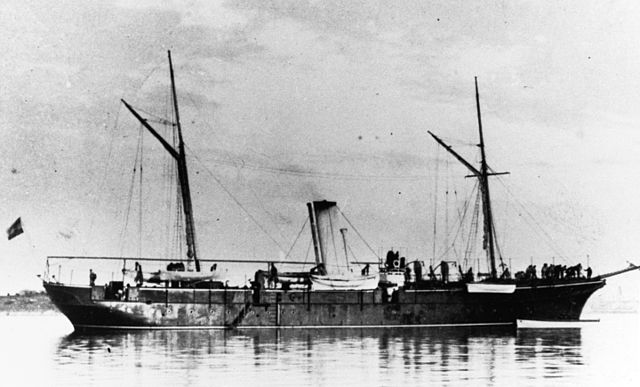
The previous Zara class (1879)
Development
The Panther was laid down in October 1884 and the Leopard in January 1885. They were launched in June and September 1885 and accepted in December 1885 and March 1886. With their displacement of 1557 tons, their armament was limited to two 120 mm (5 in) guns in barbettes, and several rapid-fire 47 mm, 44 caliber pieces of ordinance including 6 revolvers. Their also had four torpedo tubes of small caliber (350 mm). Their overall military value was equal to that of simple gunboats. Nevertheless, Austro-Hungarian engineers learned a few lessons that they applied to the construction of a third ship to STT, SMS Tiger.
SMS Tiger
Vice Admiral Maximilian Daublebsky von Sterneck, then at the head of the Navy published a memorandum in 1884, arguing for a torpedo-ram cruiser (“Torpedo-Rammkreuzer”). One of the crucial point was a reinforced bow for ramming. She was also like the previous Panther, to be able to carry out patrol and reconnaissance duties. She was begun in October 1886, launched in June 1887 and accepted in March 1888. She was larger and heavier (1657 tons), and somewhat inspired by the British Navy’s light cruiser HMS panther. Like the two previous ships, she had two 120 mm guns in barbettes, and ten guns, of 47 mm, as well as the usual four 350 mm torpedo tubes.
She was not especially faster than the others. Her specs were as follows: 74.16 meters (243 ft 4 in) long, 10.55 m (34 ft 7 in) wide, with a 4.3 m (14 ft 1 in) draft and displacement of 1,657 to 1,680 t (1,631 to 1,653 long tons; 1,827 to 1,852 short tons). Her crew was later decreased from 188 officers and men to 177. Her propulsion consisted of two 2-cylinder compound steam engines rated at 5,700 indicated horsepower (4,300 kW). Their top speed was 18.56 knots (34.37 km/h; 21.36 mph). She was better armed with four 120 m (4.7 in) Krupp 35 cal. mounted in sponsons, but the light armament remains the same, six 47 mm (1.9 in) quick-firing guns and four 47 mm revolver cannon.
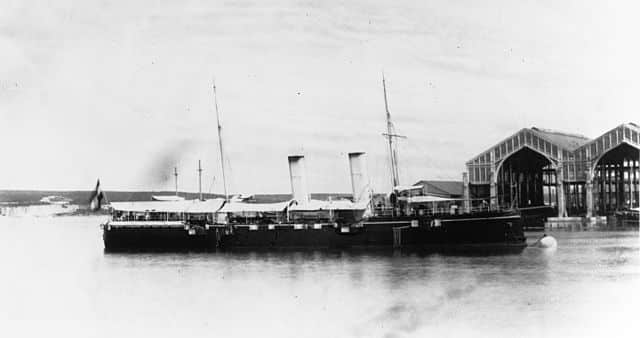
SMS Tiger as built, 1886
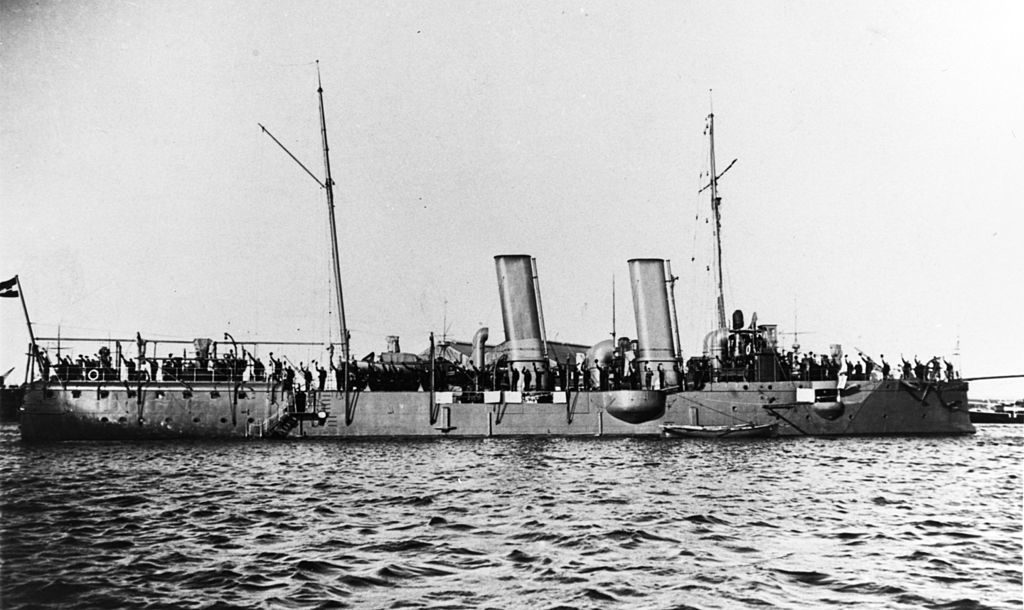
SMS Panther before the war
Service History
The Panther was part of the East Asian station in 18966-98 and in this period, assisted American Marines from USS Monocacy in Shanghai with its own landing party. She later cruised the western Mediterranean Sea, briefly the Atlantic Ocean and ventured as far as East Africa in 1905 (Captain Ludwig von Höhnel). These three ships were already obsolete in 1909. The two Panthers were modernized in 1909-1910, by removing their their 120 mm guns. They kept a battery of four 66 mm (2.6 in) 45-cal. guns and ten 47 mm QF guns. In 1914 she was part of the Coastal Defense Special Group, supporting an attack against Montenegrin forces in 1916. She later received a 66 mm gun in an anti-aircraft mounting. Subsequently, the Panther was used as a coastguard in Cattaro and in 1917 was converted into a submarine cadet training ship. The Leopard was reduced to a crew of gunners, and used from March 1914 as a coastguard to Pola.
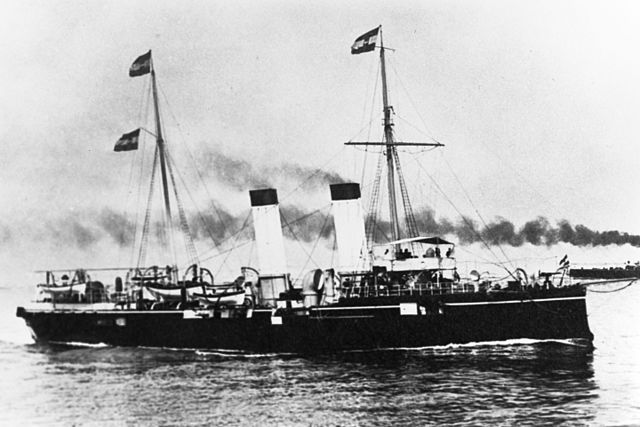
SMS Leopard underway, circa 1890.
The Leopard participated in the events in Crete in 1897, toured the Pacific Ocean in 1900–1901 and was part of the East Asia squadron in 1907–1909, before join the drydoc for modernization. By May 1914, she has been decommissioned. She stayed at Pola for the duration of the war.
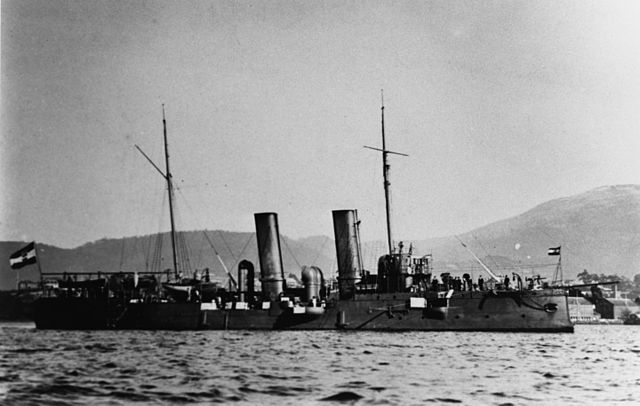
HMS Panther in an official visit to Australia
The Tiger showed the flag in the international naval demonstration off Crete in 1897 and was present at the Greek-Turkish war that same year. She was converted into the Admiralty Yacht in 1905 under the name SMS Lacroma. Her armament was reduced to six 47 mm QF guns. In 1915 she was completely disarmed, and in 1918, captured by the Yugoslavs and used shortly by the Royal Yugoslav Navy before being handed over to UK according to the Treaty of Saint-Germain-en-Laye as a war prize. But the latter declined and like the other two, she was broken up in Italy.
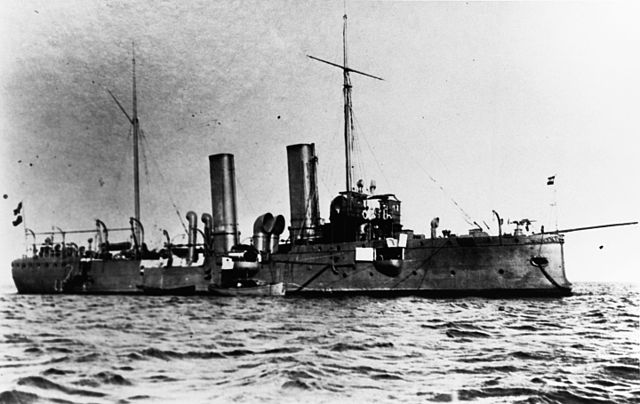
SMS leopard, date unknown
Links and sources
The Panther class on wikipedia
Google Books
Index of ww1 Austro-Hungarian ships
Conway’s all the world fighting ships 1865-1905
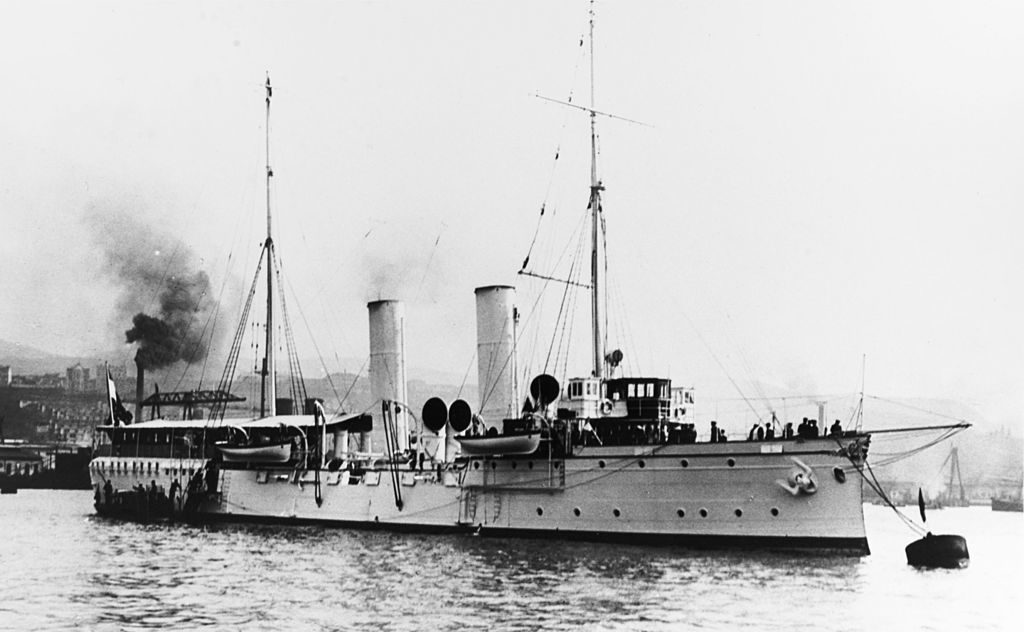
SMS Lacroma, Admiralty ship.
Panther specifications (1914) |
|
| Dimensions | 73,2 x 10,4 x 4,3 m (ft) |
| Displacement | 1560 t FL |
| Crew | 92 |
| Propulsion | 2 screws, 2 VEC 2 cyl., 16 BOILERS, 5950-6400 HP. |
| Speed | 18,5 knots (xx km/h; 20.1 mph Budapest) |
| Armament | 10 x 47mm QF guns |
| Armor | Deck 12 mm |
Gallery
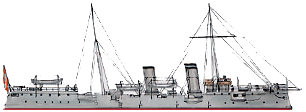
Illustration of the Panther – 1/730


 Latest Facebook Entry -
Latest Facebook Entry -  X(Tweeter) Naval Encyclopedia's deck archive
X(Tweeter) Naval Encyclopedia's deck archive Instagram (@navalencyc)
Instagram (@navalencyc)





 French Navy
French Navy Royal Navy
Royal Navy Russian Navy
Russian Navy Armada Espanola
Armada Espanola Austrian Navy
Austrian Navy K.u.K. Kriegsmarine
K.u.K. Kriegsmarine Dansk Marine
Dansk Marine Nautiko Hellenon
Nautiko Hellenon Koninklije Marine 1870
Koninklije Marine 1870 Marinha do Brasil
Marinha do Brasil Osmanlı Donanması
Osmanlı Donanması Marina Do Peru
Marina Do Peru Marinha do Portugal
Marinha do Portugal Regia Marina 1870
Regia Marina 1870 Nihhon Kaigun 1870
Nihhon Kaigun 1870 Preußische Marine 1870
Preußische Marine 1870 Russkiy Flot 1870
Russkiy Flot 1870 Svenska marinen
Svenska marinen Søværnet
Søværnet Union Navy
Union Navy Confederate Navy
Confederate Navy Armada de Argentina
Armada de Argentina Imperial Chinese Navy
Imperial Chinese Navy Marinha do Portugal
Marinha do Portugal Mexico
Mexico Kaiserliche Marine
Kaiserliche Marine 1898 US Navy
1898 US Navy Sovietskiy Flot
Sovietskiy Flot Royal Canadian Navy
Royal Canadian Navy Royal Australian Navy
Royal Australian Navy RNZN Fleet
RNZN Fleet Chinese Navy 1937
Chinese Navy 1937 Kriegsmarine
Kriegsmarine Chilean Navy
Chilean Navy Danish Navy
Danish Navy Finnish Navy
Finnish Navy Hellenic Navy
Hellenic Navy Polish Navy
Polish Navy Romanian Navy
Romanian Navy Turkish Navy
Turkish Navy Royal Yugoslav Navy
Royal Yugoslav Navy Royal Thai Navy
Royal Thai Navy Minor Navies
Minor Navies Albania
Albania Austria
Austria Belgium
Belgium Columbia
Columbia Costa Rica
Costa Rica Cuba
Cuba Czechoslovakia
Czechoslovakia Dominican Republic
Dominican Republic Haiti
Haiti Hungary
Hungary Honduras
Honduras Estonia
Estonia Iceland
Iceland Eire
Eire Equador
Equador Iran
Iran Iraq
Iraq Latvia
Latvia Liberia
Liberia Lithuania
Lithuania Mandchukuo
Mandchukuo Morocco
Morocco Nicaragua
Nicaragua Persia
Persia San Salvador
San Salvador Sarawak
Sarawak Uruguay
Uruguay Venezuela
Venezuela Zanzibar
Zanzibar Warsaw Pact Navies
Warsaw Pact Navies Bulgaria
Bulgaria Hungary
Hungary

 Bundesmarine
Bundesmarine Dutch Navy
Dutch Navy Hellenic Navy
Hellenic Navy Marina Militare
Marina Militare Yugoslav Navy
Yugoslav Navy Chinese Navy
Chinese Navy Indian Navy
Indian Navy Indonesian Navy
Indonesian Navy JMSDF
JMSDF North Korean Navy
North Korean Navy Pakistani Navy
Pakistani Navy Philippines Navy
Philippines Navy ROKN
ROKN Rep. of Singapore Navy
Rep. of Singapore Navy Taiwanese Navy
Taiwanese Navy IDF Navy
IDF Navy Saudi Navy
Saudi Navy Royal New Zealand Navy
Royal New Zealand Navy Egyptian Navy
Egyptian Navy South African Navy
South African Navy






























 Ukrainian Navy
Ukrainian Navy dbodesign
dbodesign